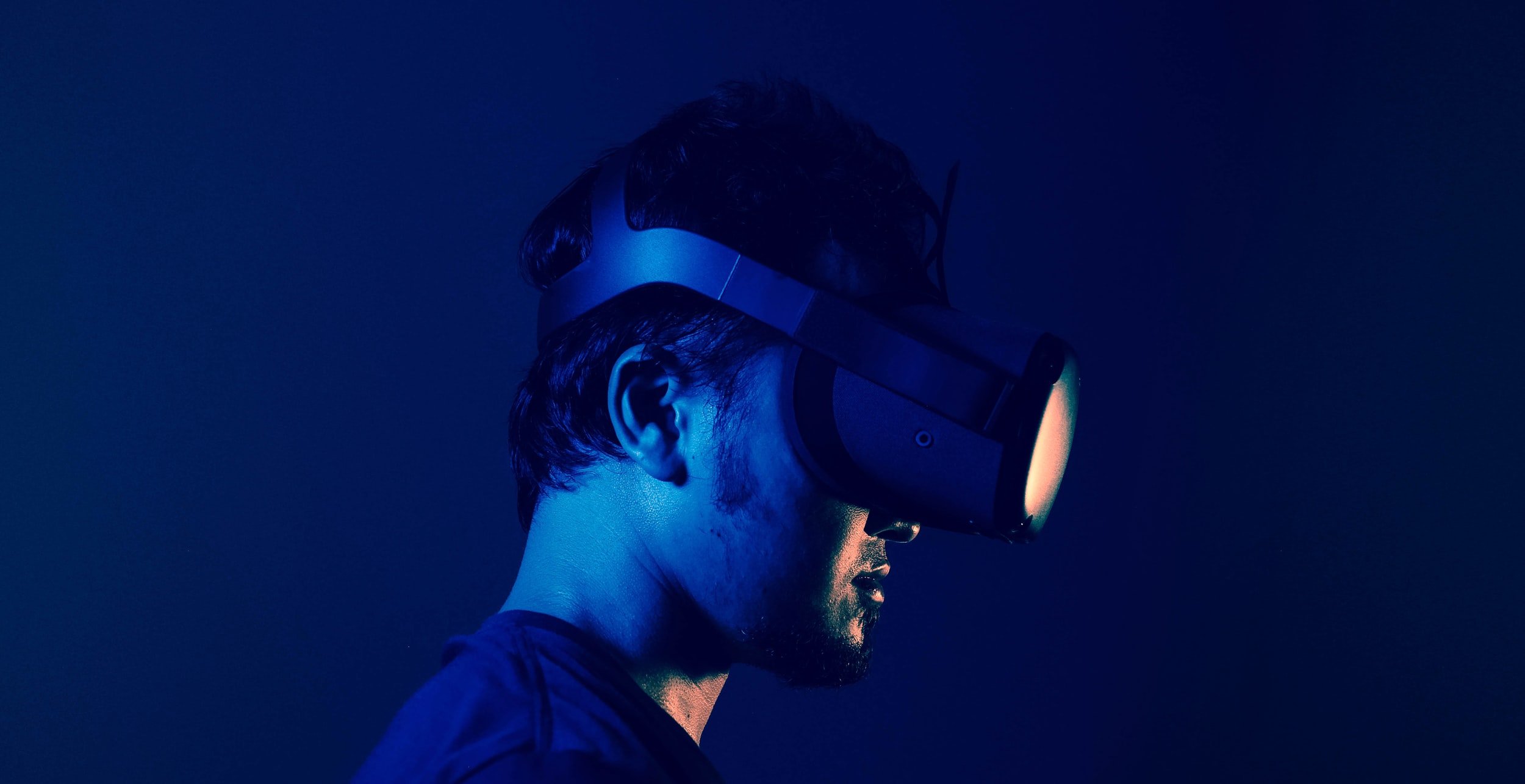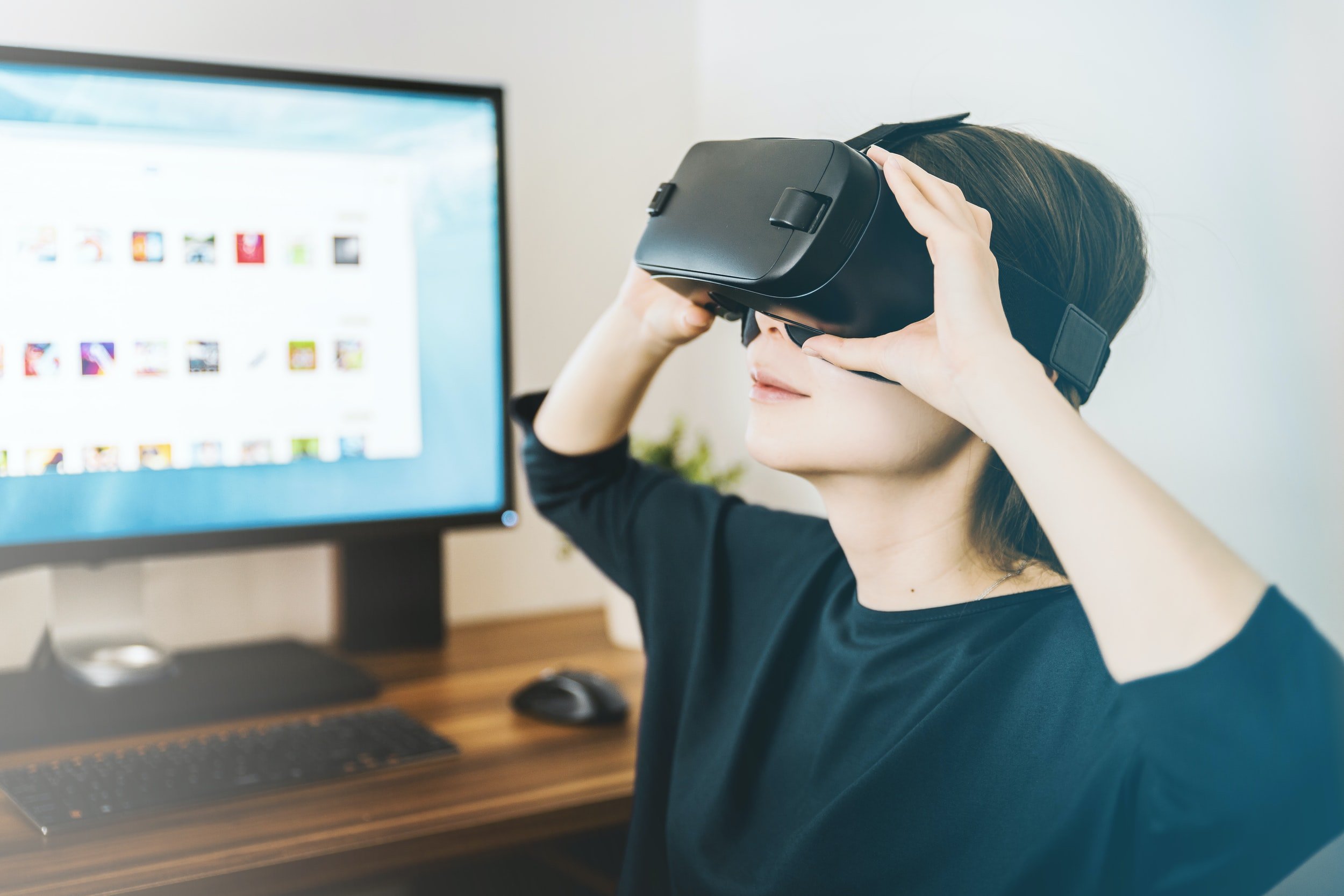Virtual Reality and Your Vision
Call it what you want – the rise of The Metaverse, Virtual Reality, Phygital Experiences, or Web 3.0 will pose major problems to your eyes in real life.
It’s 7:59 a.m. on March 1, 2030, and you’re off to work. In a manner of speaking.
You strap on your job-issued Facebook, Apple, or Google Virtual Reality (VR) headset to enter “The Metaverse” for your first meeting of the day and find yourself instantly at “the office” where you greet your (3D avatar) co-workers. After your status call, you’ve got a big presentation to clients. You’ll have to get to your emails later…
Fast forward to 6:30 p.m. All-in, you’ve already spent 9+ hours absorbed in virtual reality content and traditional digital experiences (like reading this blog).
Hey, it beats rush hour on the subway, right?
The work day might be over(-ish) but your VR and screen time is just getting started.
There’s a Rangers game in 30 minutes. And since it’s a Tuesday night, you sold your in-person tickets and opted for a complementary VR seat. Time to grab your personal headset…
During the 2nd intermission there was a commercial for The Louvre's new VR experience. You decide to dip out on the Rangers’ feed and pay the $10 fee to check out The Mona Lisa from the comfort of your lounge chair. And it was even better than when you saw it in person on your honeymoon… the curator’s narration was insightful and you could get up-close and personal with the art.
Next up: a group call with your spouse and your kids at college…
The potential of immersive VR experiences certainly seems exciting, exotic, and even extraordinary. If many predictions come true, in 10 years you won’t be able to imagine life without the virtual world of the Metaverse. It is supposedly poised to become as much a part of our daily lives as the conventional Internet is today – and a VR headset will be as critical then as our Smartphones are today.
This is the “promise” of “the metaverse.”
I don’t know for sure if it will happen – I’m an eye doctor. But as an ophthalmologist, I know one thing for certain. The harm this brave new (virtual) world will do to your eyes will be real and significant.
You don’t need to be an eye doctor to see why.
Between social media, entertainment, gaming, and education, Millennials and Gen Z are already spending 14+ hours a day staring at screens. This will only increase. And imagine what happens if a majority of these hours are spent with an immersive monitor glued to your face.
Our eyes were not made for the type of relentless 3D immersion that’s (probably) coming.
VR Eye Strain will be much worse than standard Computer Vision Syndrome
We already know that excessive screen time has driven up the prevalence of digital eye strain (DES). The more you stare at a screen, and the closer the screen is to your face, the harder your eyes are working to focus and create crisp images for you.
Ask anyone with vision problems – the miracle of clean and clear eyesight is not something to take for granted.
Unfortunately, we know that more screen time results in higher rates of myopia (nearsightedness) and that virtual schooling has likely accelerated the progression of myopia in children. More digital screen time can also cause lengthening of the eye.
Dry eyes are another extremely common problem aggravated by DES. Although humans typically blink about 15 times each minute, we only blink about 5 to 7 times each minute when looking at digital screens. Blinking is how our eyes keep moisture on their surface. Insufficient blinking gives us the DES symptom of dry eye. Dry eye may seem like a minor annoyance, but we know it’s more debilitating than it seems.
These problems will all be compounded by VR headsets, which bring a new twist to eye strain. VR headsets typically deliver content via two small monitors, each projected at one eye, creating a stereoscopic effect and the illusion of depth. It takes our brain several moments to figure out what the eyes are seeing, and the eye muscles struggle to focus. That’s the first bit of eye strain unique to VR. The bigger problem is the hours people will spend behind this virtual veil, staring at and interacting with dynamic virtual projections just centimeters away from their eyes.
Constant focus fatigue can cause severe eye strain. And when you take off the VR headset after using it for hours, your eyes will be twitchy, your vision will be blurry, and you will likely misjudge distance.
On top of eye strain and dry eye, VR headsets could even alter eye growth. And we know that severe myopia is a risk factor for multiple eye problems later in life, such as retinal detachment, glaucoma, and macular degeneration.
Moderation is everything…
It will probably be impossible to avoid VR experiences in the future. And that’s okay.
Still, there is no time like the present to be informed of the visual and other mental and physical health risks of “the metaverse,” and to make a conscious decision to limit your exposure to these risks today (Web 2.0) and tomorrow (Web 3.0).
For advice on simple ways to mitigate these risks, check out my blog on the subject.
If you live in the New York City area and are experiencing digital eye strain,reach out to me with your questions and we’ll schedule an exam.
Looking for a new eye doctor or curious about laser vision correction?
Let’s schedule an exam!




